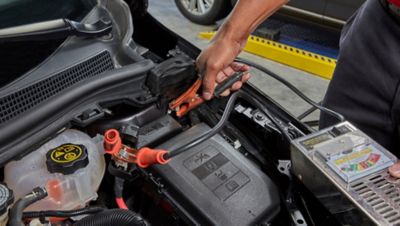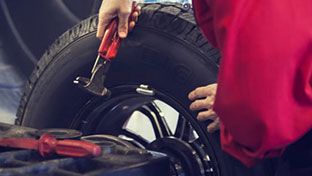Every time a wheel is first mounted onto the axle with a new tire, it has to be balanced. The goal is to make sure the weight is even around the axle.

Wheel balance is checked on a wheel balancing machine that can sense as little as 1/4 ounce difference in weight around the wheel. Why worry about 1/4 ounce on a wheel that weighs many pounds? That tiny amount of weight is traveling very fast around the axle: hundreds of times a minute. It creates enough momentum to cause serious vibration. And when you multiply by 4 wheels, the wobble really adds up. Unbalanced tires put uneven pressure on the treads. Tires get too hot and wear unevenly. Tire imbalance can also strain the wheel bearings and suspension system.
To balance the tires, the technician places tiny offsetting weights at specific points around the wheel
Not "once and done"
The minute you pull away from the service station with your newly balanced tires, they begin getting out of balance again. Every bump and corner affects balance; so does tire wear. Over time, your tires get out of balance again. That's why it's important to have tires balanced regularly.
What are the warning signs that my tires aren't balanced?
You're most likely to notice uneven wear on the tires. Many drivers also notice vibration over 40 mph, especially if the imbalanced tires are on the front.
How often should my tires be balanced?
During typical use, it's a good idea to have your tires rotated and balanced every 4,000 to 6,000 miles. Have them balanced any time a tire is replaced or patched.

